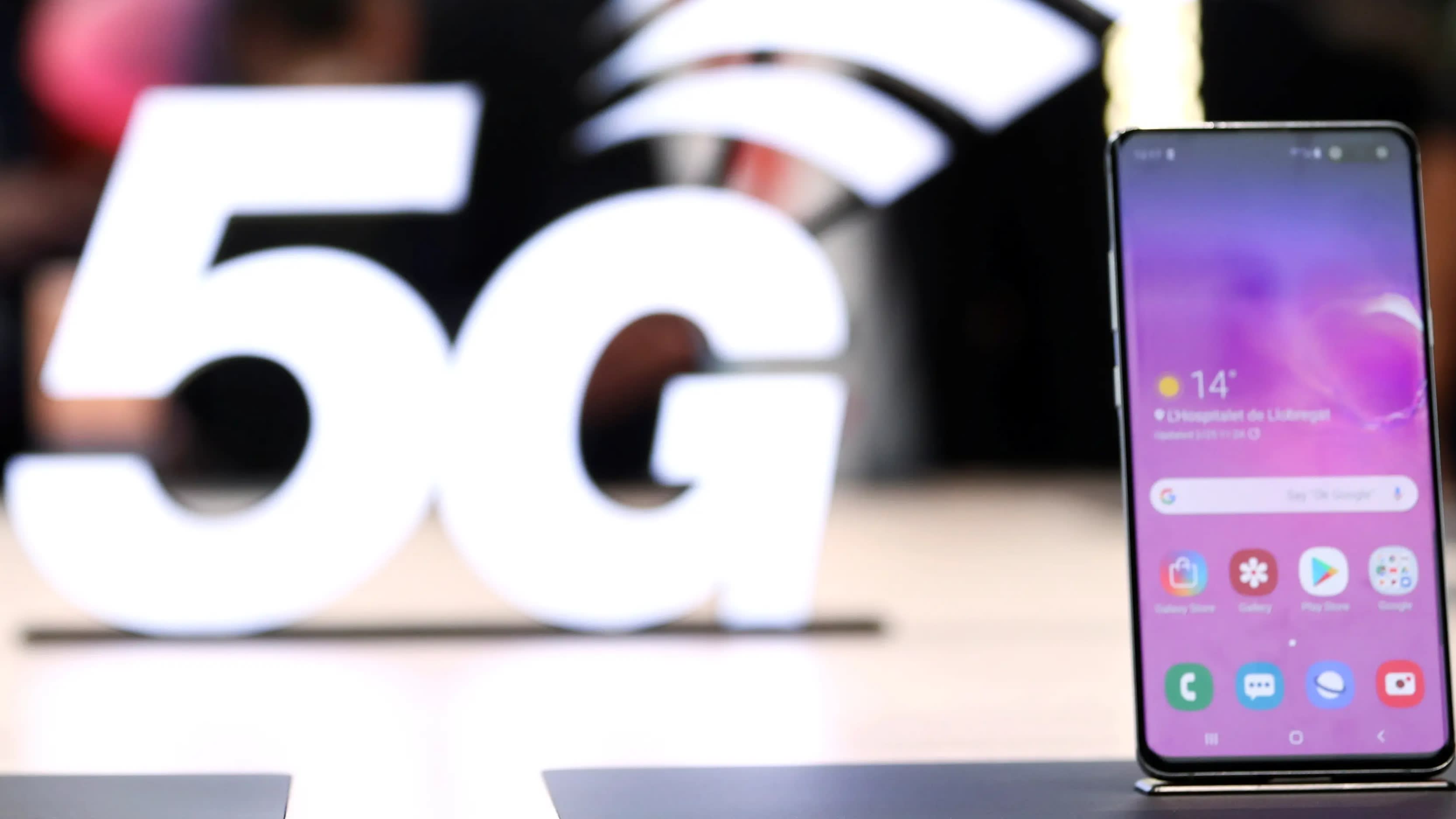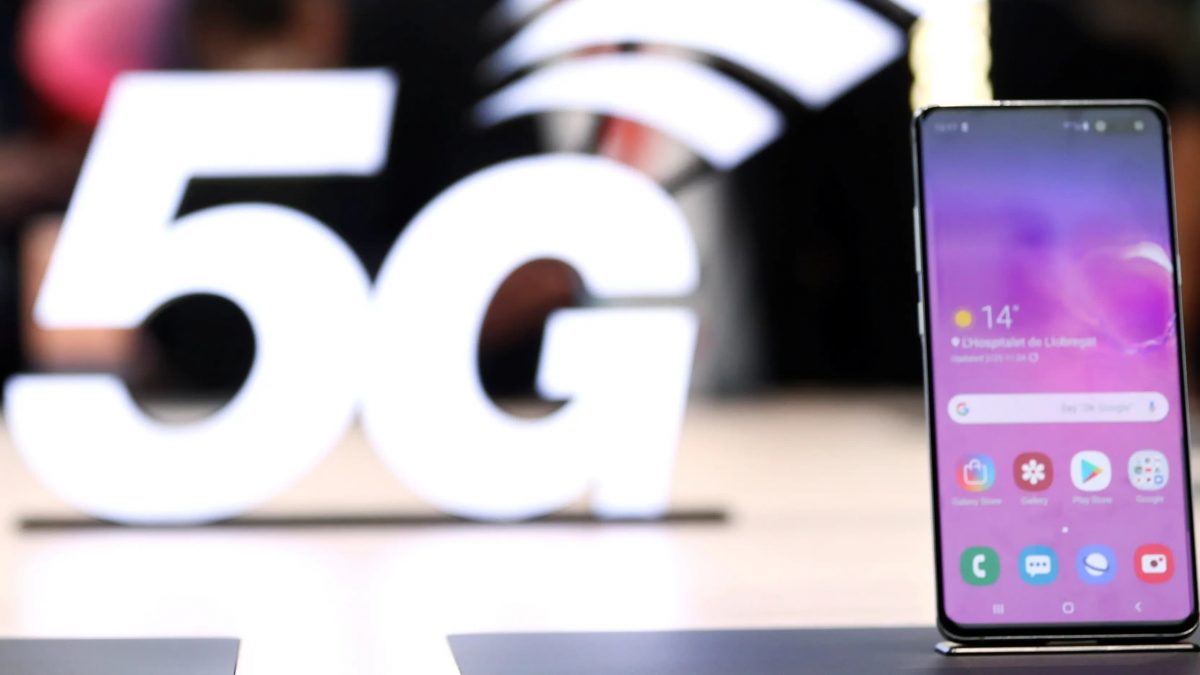
SEOUL — South Korea will on Friday become the first country to offer commercial fifth-generation wireless communication, providing a test of what consumers can expect from faster data speeds.
The three leading South Korean wireless carriers — KT, SK Telecom and LG Uplus — will make 5G network access available to users of Samsung Electronics‘ Galaxy S10 5G smartphones. That gives South Korea’s biggest phone maker an advantage in adapting to the change.
KT on Tuesday announced the pricing for its 5G service, which will enable users to transmit data about 20 times faster than the fastest 4G networks. The government has strongly urged carriers to make 5G affordable to encourage takeup of the service.
KT’s service will cost 55,000 Korean won ($48) per month. The plan for unlimited data will cost 80,000 won, which is about 60% higher than the comparable 4G service.
KT recently launched its own video call service called Narle, which allows group video calls with up to eight people, as well as augmented reality emoji and 3D avatars. While the service works on 4G, the company says 5G will enhance its offerings.
Gaming is another sector that will benefit from the faster network services, as users will be able to stream games rather than download them. Role-playing game “Ragnarok Clicker H5” and AR dating simulator “Love Revolution” will be available when the 5G network goes live on Friday, with more titles expected to follow.
“When the infrastructure is available, we expect more developers will offer their contents and services,” said Lee Pil-jae, head of KT’s marketing department. “The 5G network will accelerate transition of media power to individuals.”
Meanwhile, LG’s service will offer 5G for up to 500 gigabytes worth of data, equal to about 60 movies, for 75,000 won per month. SK is expected to announce its pricing on Wednesday.
The Friday start for a commercial 5G service puts South Korean telecoms one week ahead of leading U.S. carrier Verizon, which plans to launch its offering on April 11 using Motorola’s Z3 phone. American rival Sprint is expected to kick off 5G service later this month with LG Electronics‘ V50.
The debut of 5G in South Korea will also serve as a test for China’s Huawei Technologies. Huawei has a stake in the success of the South Korean 5G launch as an equipment supplier to LG Uplus, along with Samsung, Ericsson and Nokia. Huawei has been blocked from 5G projects in a number of countries, in particular the U.S. where its technology has been blocked on national security concerns. However, it has found more receptiveness in Asia.
“Certainly for Huawei, this is an opportunity to showcase how its equipment with 5G commercially runs,” said Susan Welsh de Grimaldo, an analyst at Strategy Analytics. “Looking at 5G technically, it’s just important to really get that out there, to have the real world experience in real environments — of how it functions — and learn from that.”
Kwon Myung-jin, a spokesman for LG Uplus, said the Huawei network equipment has been in place since December.
South Korean phone makers such as Samsung and LG stand to benefit from early adoption of 5G.
“As 5G services will be commercialized in South Korea and the U.S. from the second quarter of 2019, Samsung Electronics and LG Electronics are expected to increase their market shares due to the early launches,” said Jeff Kim, an analyst at KB Securities. Leading smartphone makers Huawei and Apple are not expected to release 5G phones until later this year or after, Kim noted.
Analysts say the government’s strong telecommunications policy and the country’s population density have helped South Korea take the lead in 5G. About 40% of its 50 million people live in the Seoul metropolitan area.
“The key reason why South Korean carriers are ahead when others are more cautious is the government’s push,” said Sean Hwang, an analyst at Moody’s Investors Service. “The government wants to make sure South Korea will be first in 5G, like [it was] for 4G LTE.”
“Another reason is factors like geographic characteristics and population density,” Hwang said. “Compared to the U.S. or China, the much smaller land area with high population density makes it more economically viable to invest.”
However, the rapid rollout of 5G — strongly encouraged by the government — may make less sense for South Koreans carriers. “You will end up with profitability declining a little bit over the next couple of years as they spend on 5G with this desire to be first [but] without clear application,” said Colin McCallum, head of Asia-Pacific telecommunication research at Credit Suisse.
McCallum said: “5G is becoming a reality, but it’s also, at the moment, quite over hyped.” The veteran analyst does not see the same killer applications such as video streaming available for 5G, as there was to incentivize 4G investments. “4G was a very, very good technology for telcos and consumers [as it had] enough speed to have great services,” he said last month at an annual investor conference. Some 5 billion 4G handsets were already in the hands of the users worldwide and they provided a sufficient platform for various services.
In addition, 5G requires a much wider range of spectrums in the higher bandwidth. Technically, that means telecom operators need to build a much denser network than 4G, which translates into higher capital expenditure spending down the road.
“At the Mobile World Congress, everyone in the room, except for the telcos, was excited about 5G,” said Randy Abrams, head of Credit Suisse regional semiconductor research based in Taiwan.
Besides helping consumers better enjoy online games, video and other digital content, 5G technology is also expected to play a key role in advancing data-hungry artificial intelligence in such applications as autonomous driving, drones and smart cities.
Analysts predict that faster mobile networks will transform media, retail, agriculture and a host of other sectors.
“People will have easier access to their own health data,” said James Kim, research fellow at the Asan Institute for Policy Studies in Seoul. “Remote surgery and medical treatment may become easier and more widespread.”
Kim said that drone usage by courier services is expected to shorten delivery times and costs, while in retail, the focus will move even more toward inventory and logistics and away from physical displays and showrooms.
Nikkei Asian Review chief business news correspondent Kenji Kawase in Hong Kong, Nikkei staff writers Alex Fang in New York and Wataru Suzuki in Tokyo contributed to this story.

